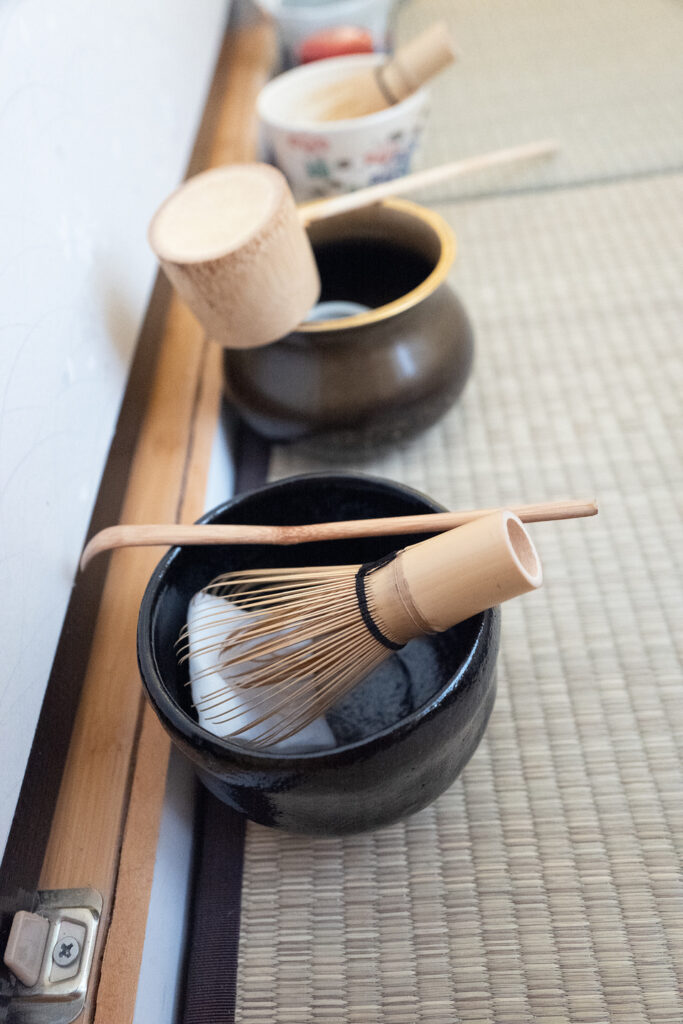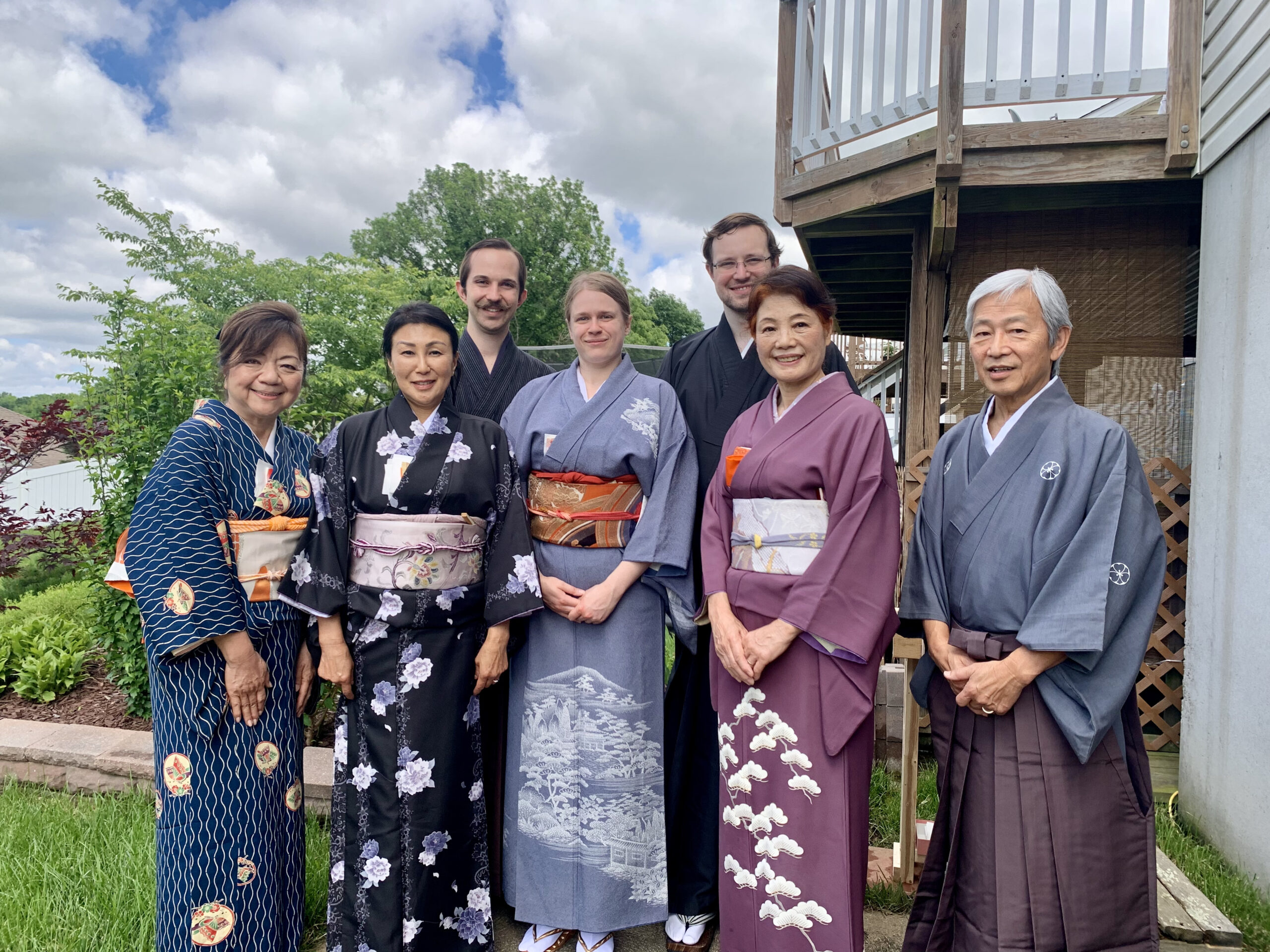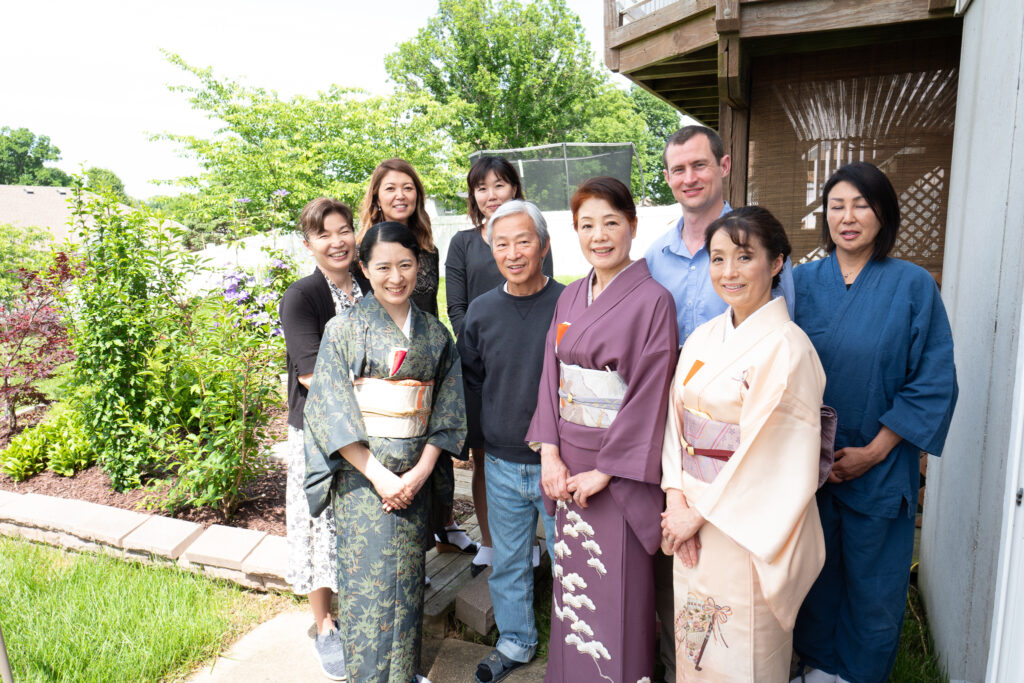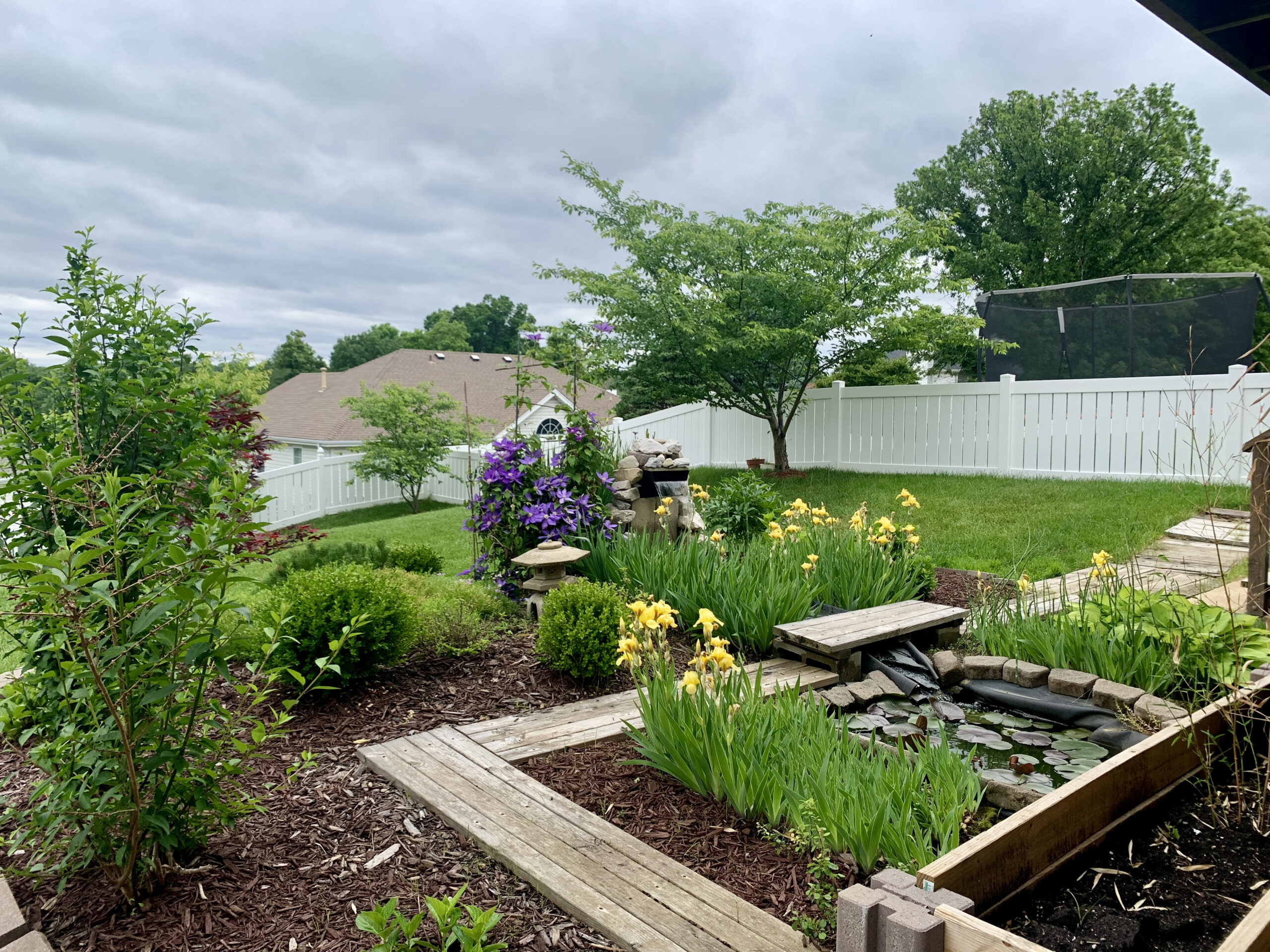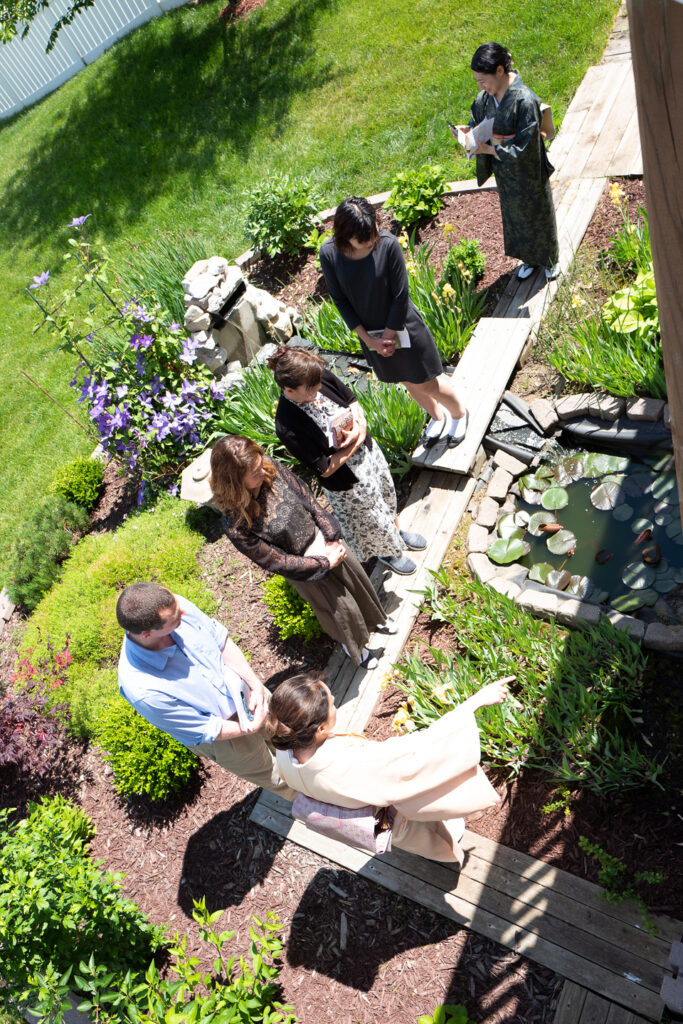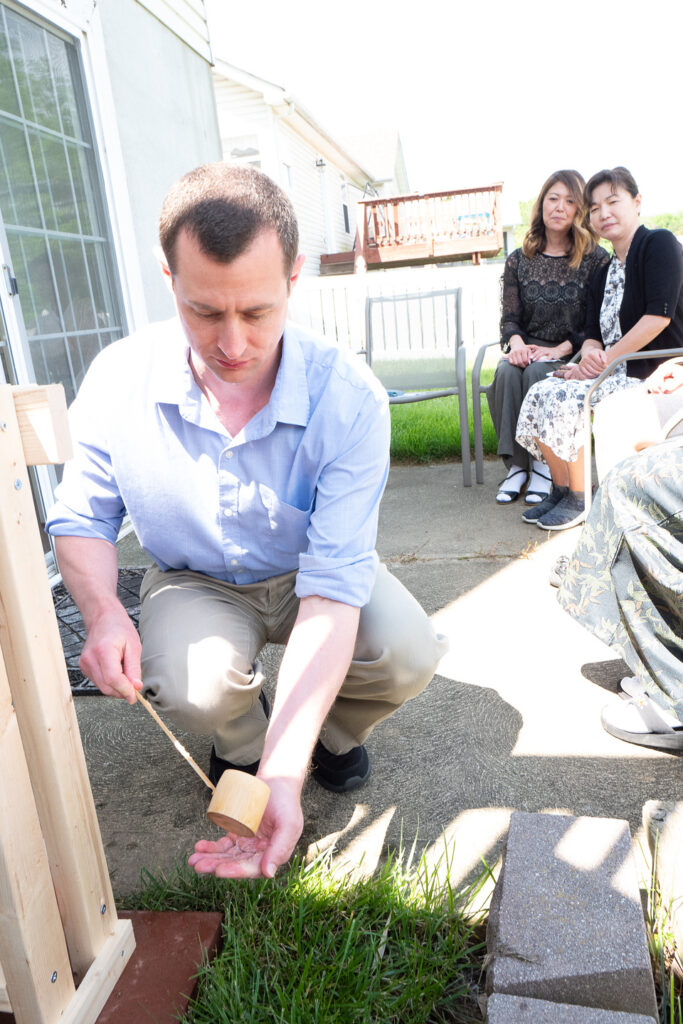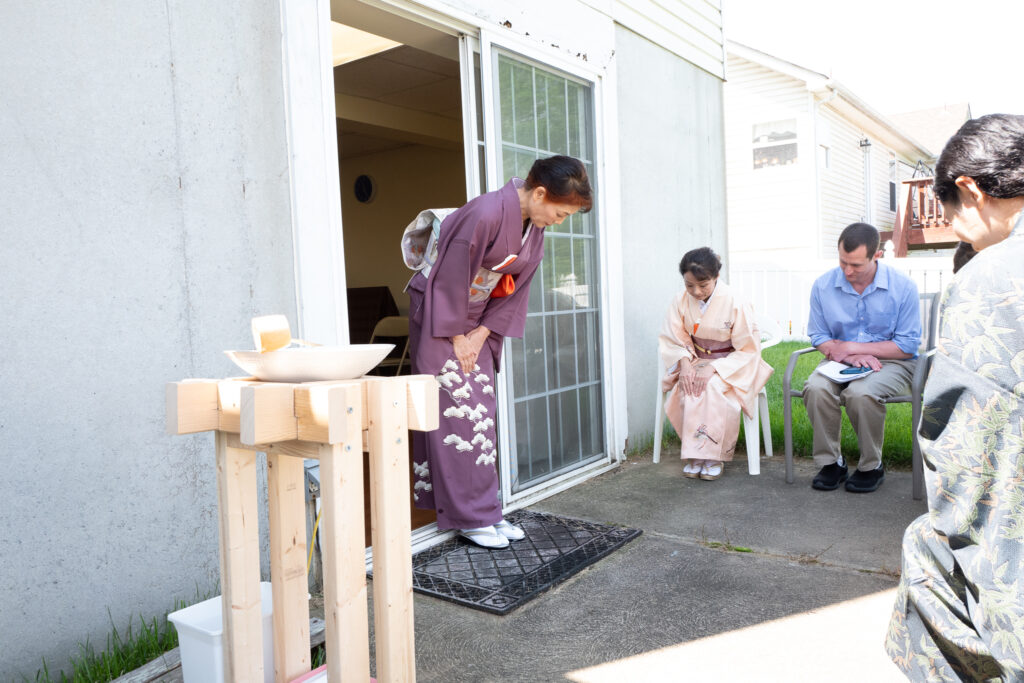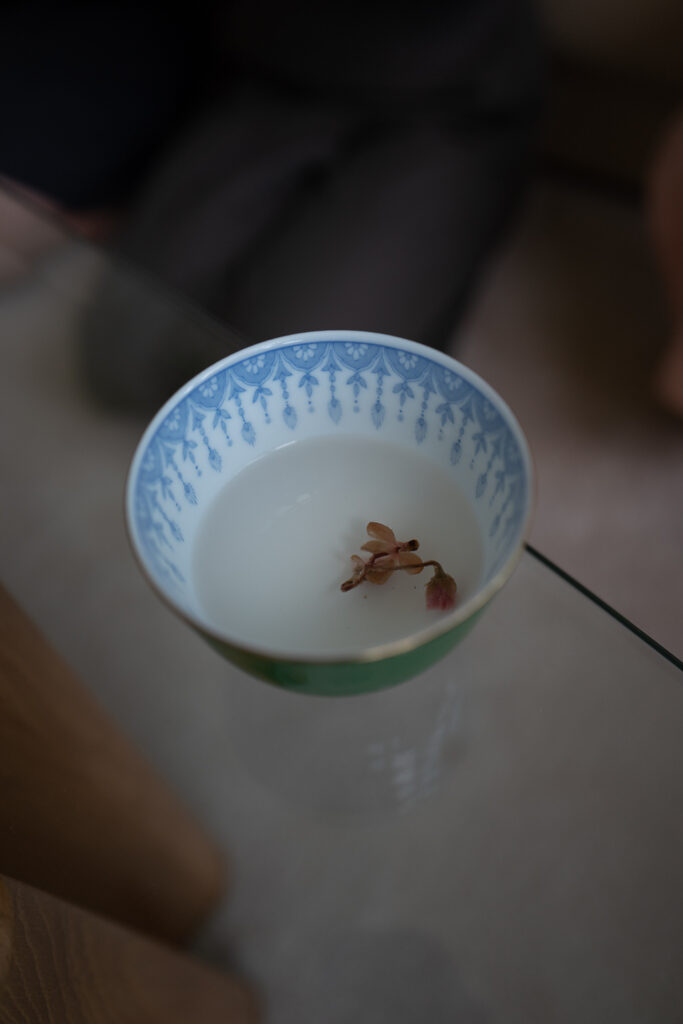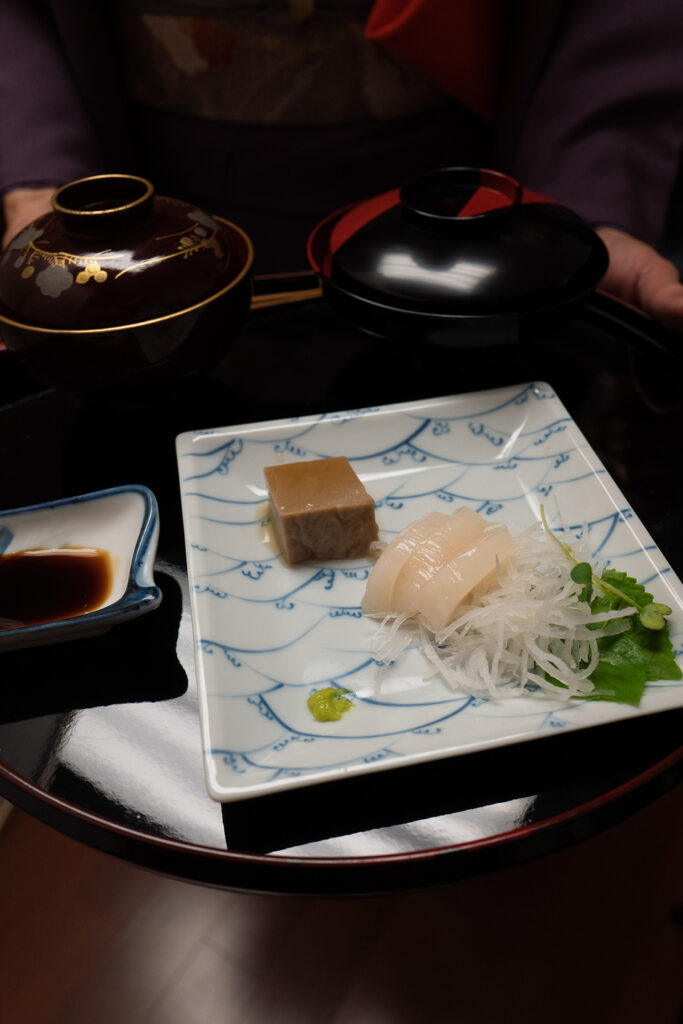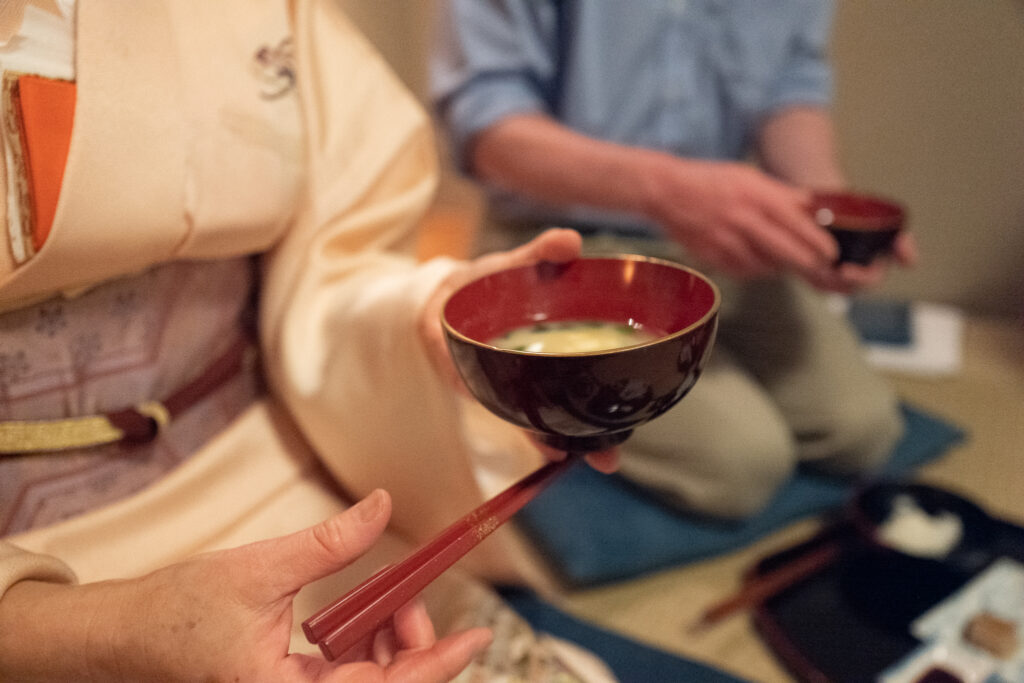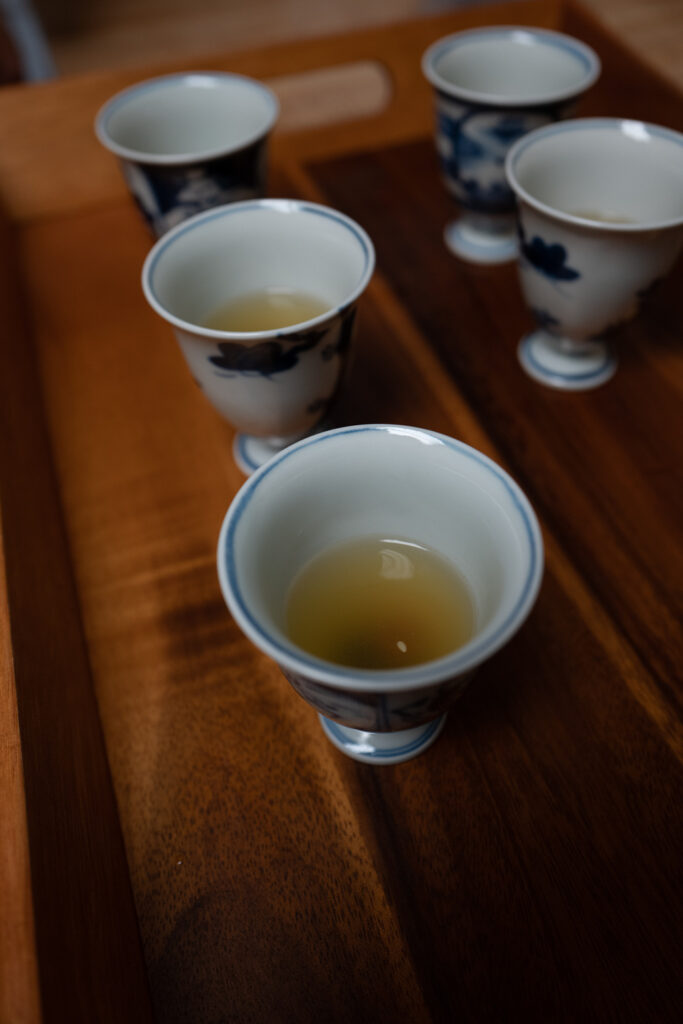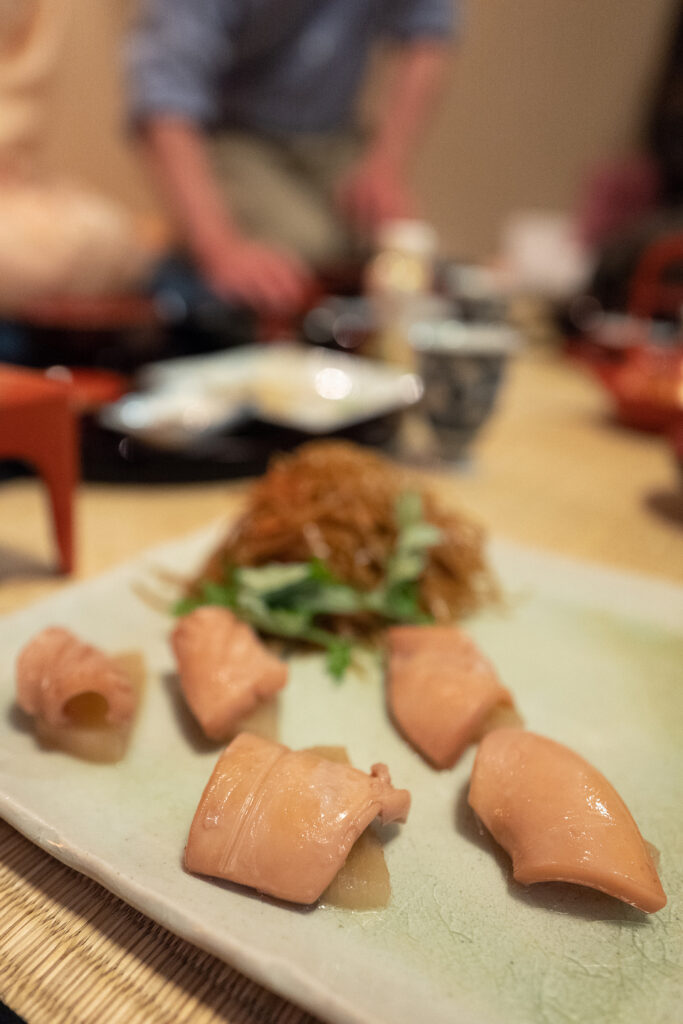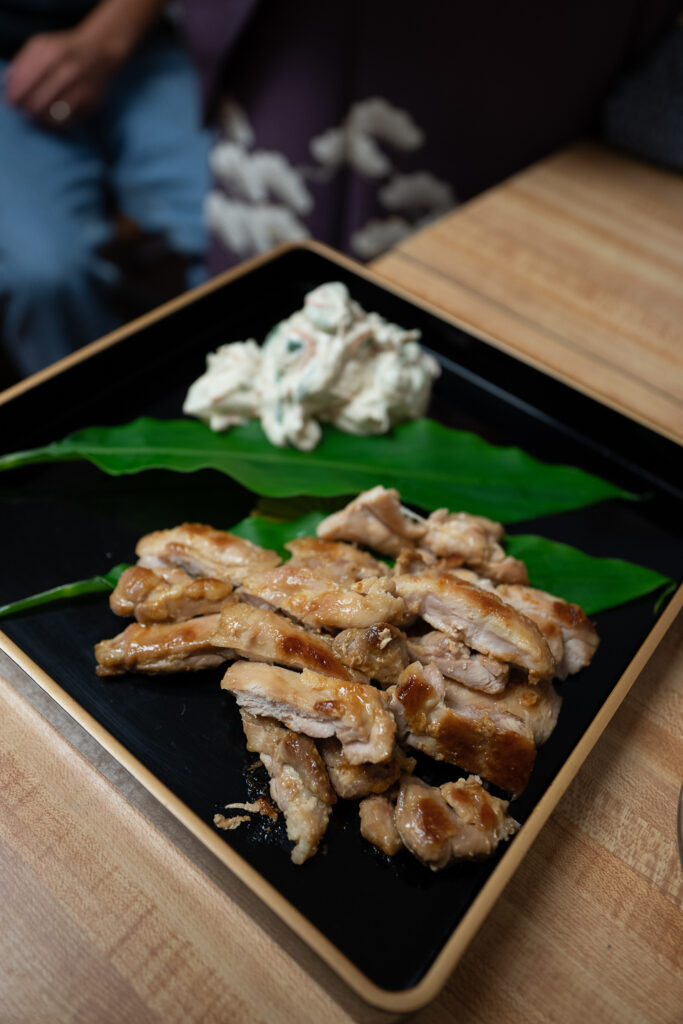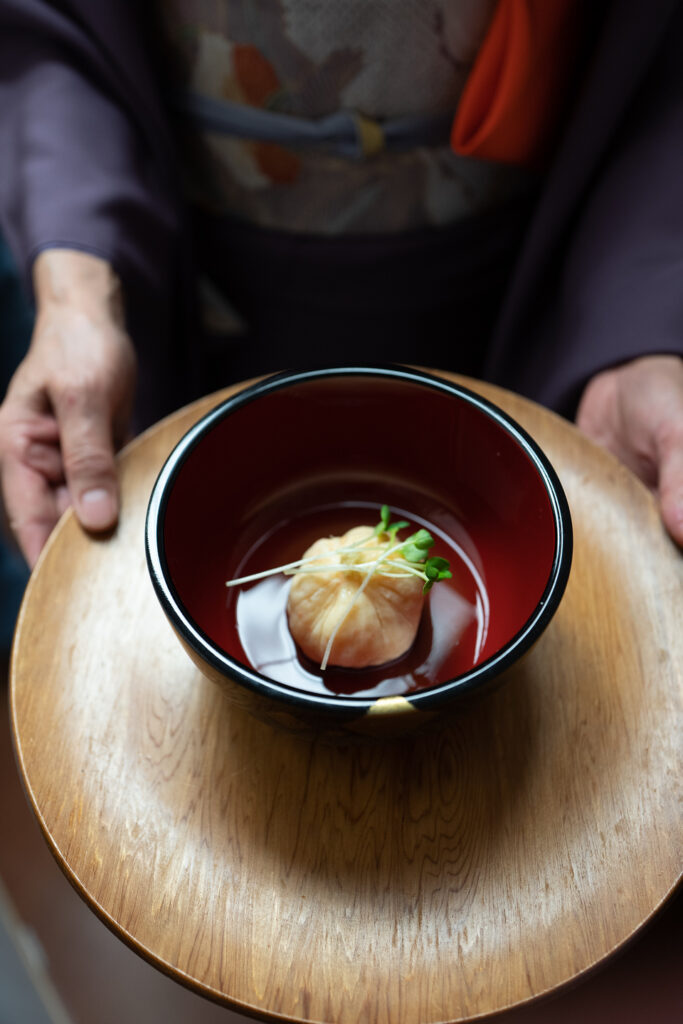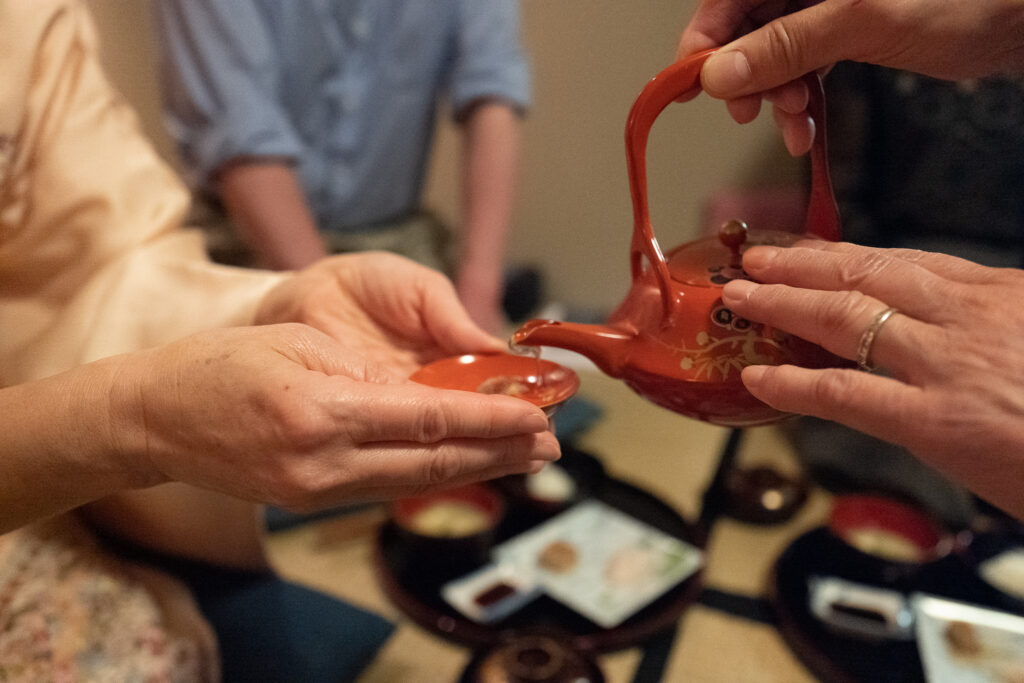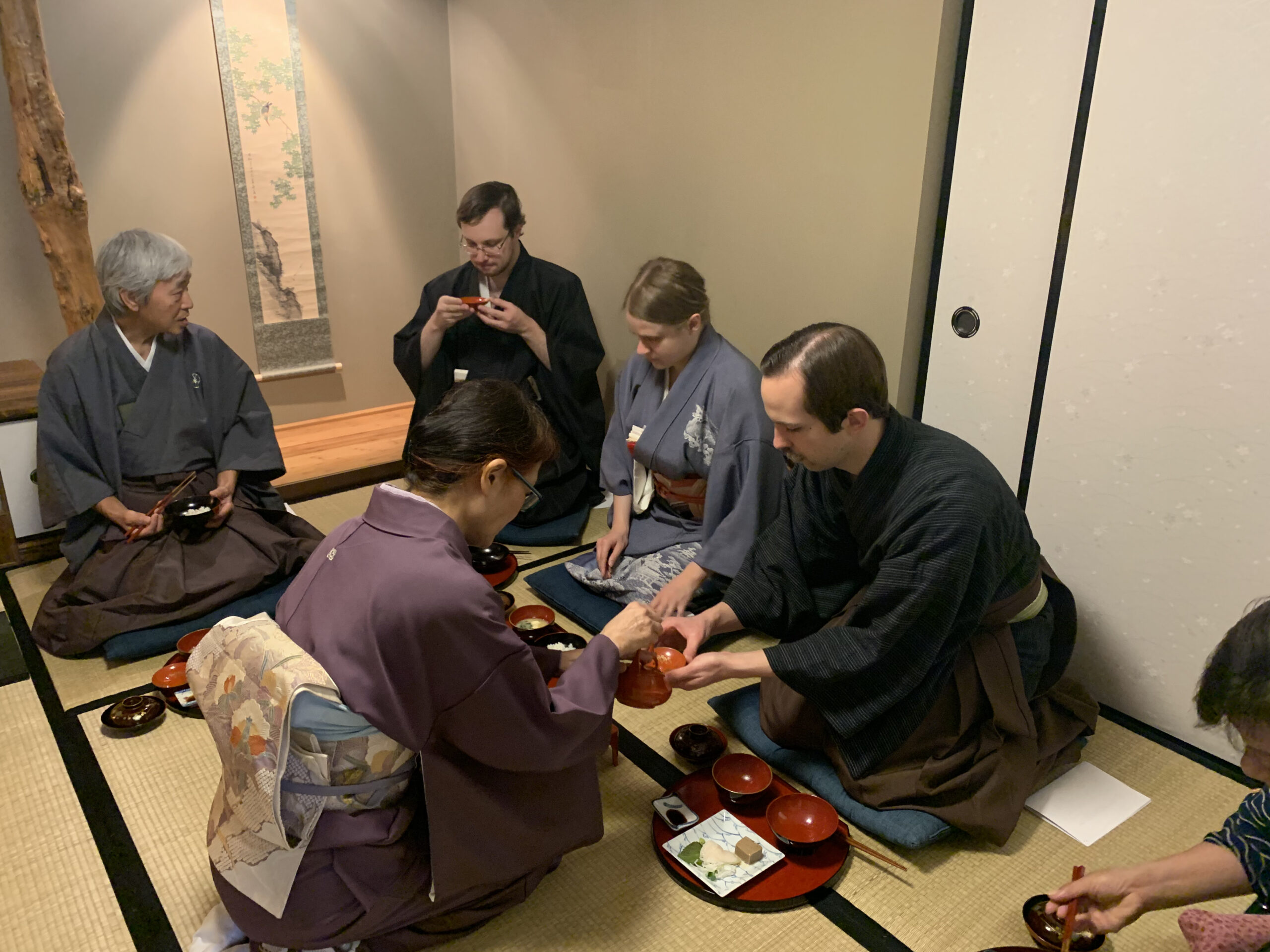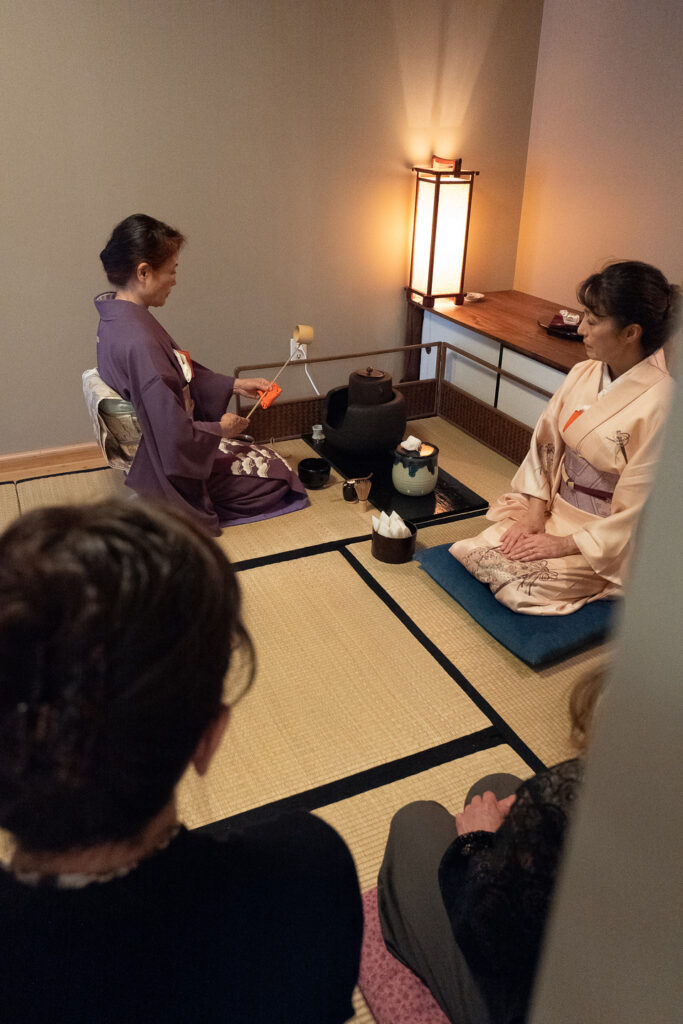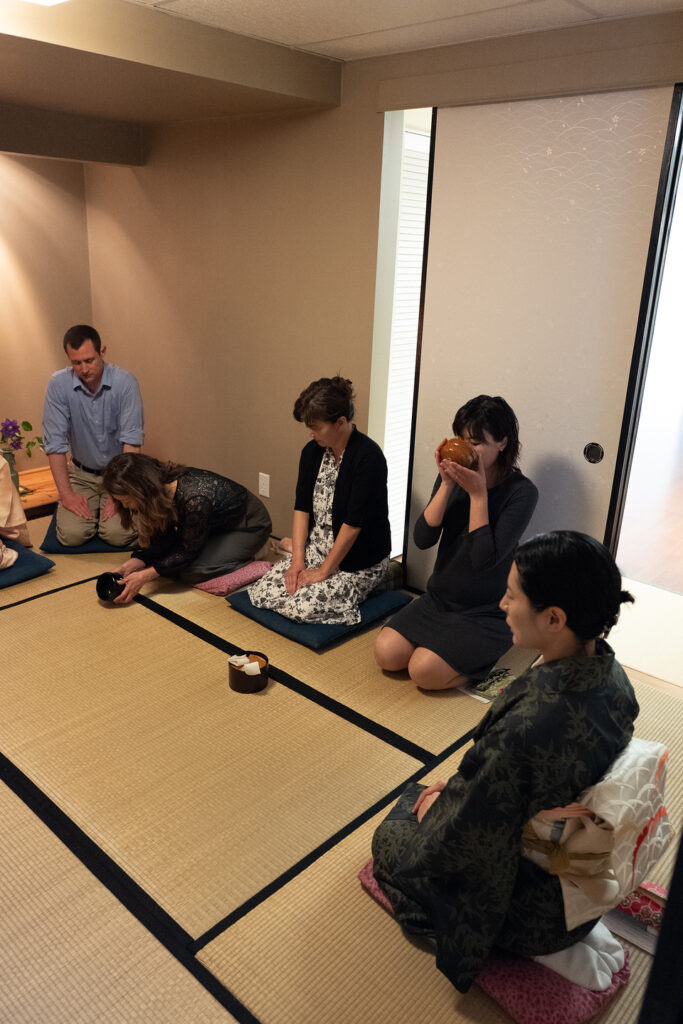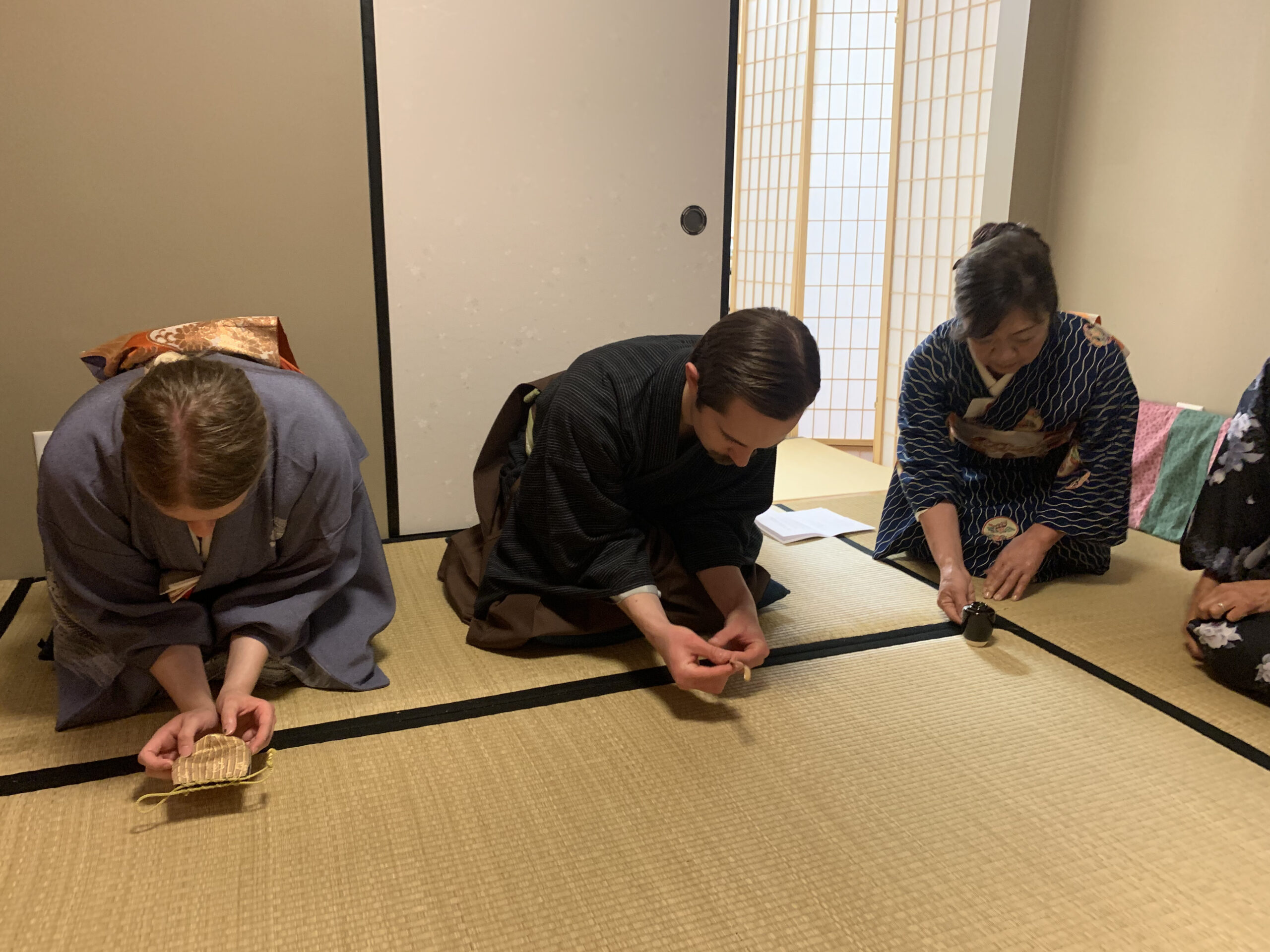5月末の土曜日、日曜日の2日間、各6人のお客様をお迎えして茶事を行いました。
On the last Saturday and Sunday of May, I invited twelve students (six each day) from my tea ceremony class to our first chaji, a formal tea gathering.
2020年年明け早々から世界に蔓延し出したコロナウイルスの為、しばらくお稽古に来て頂くことも断念せざるをえませんでした。そんな中、一クラス2名に限定し、手洗いとマスクを徹底し、換気に気を付けお稽古を始めたのが2020年7月。約1年を経て、全員の生徒さんが2度目のワクチン接種を終了したことをお祝いする意味も含めて、お茶事を開くことを思いつきました。
After the year-long pandemic, I wanted to get together to celebrate the completion of everybody’s covid vaccination. Up though May, we have been practicing tea ceremony but limiting participation to only two people at a time in the tearoom. For this special event, I only invited students who have been practicing throughout the year.
日本からこちらに帰ってくる直前の2020年の2月、私のお茶の先生の喜寿をお祝いする本格的な茶事を催し、私が亭主を務めさせていただきました。この茶事で沢山の学びを得ましたので、これを是非セントルイスの私の生徒さんたちにも経験させてあげたいと常々思っていました。今回はこのパンデミックでも熱心にお稽古に来てくださった生徒さん限定で催しました。
After hosting the formal chaji in Kyoto celebrating my teacher’s seventy-seventh birthday in February 2020, I wanted to share this unique experience with my students in St. Louis.
腰掛待合、蹲踞(つくばい)などもない我が家の庭に、手と口を清めるための台とお皿を設けるなどして、出来るだけ茶室に入るまでの雰囲気を味わって頂こうと工夫してみました。
For this occasion, my husband prepared temporary koshikake machiai, waiting chairs, and made tsukubai with a bowl and stand to cleanse hands and mouth, hoping to create an atmosphere of a formal setting for the gathering.
初入りの掛け軸は、新緑の美しい季節に合わせて、『設色翠翁窺魚』 桂仙 画
In the alcove, I hung the scroll matching for the season of fresh green outside.
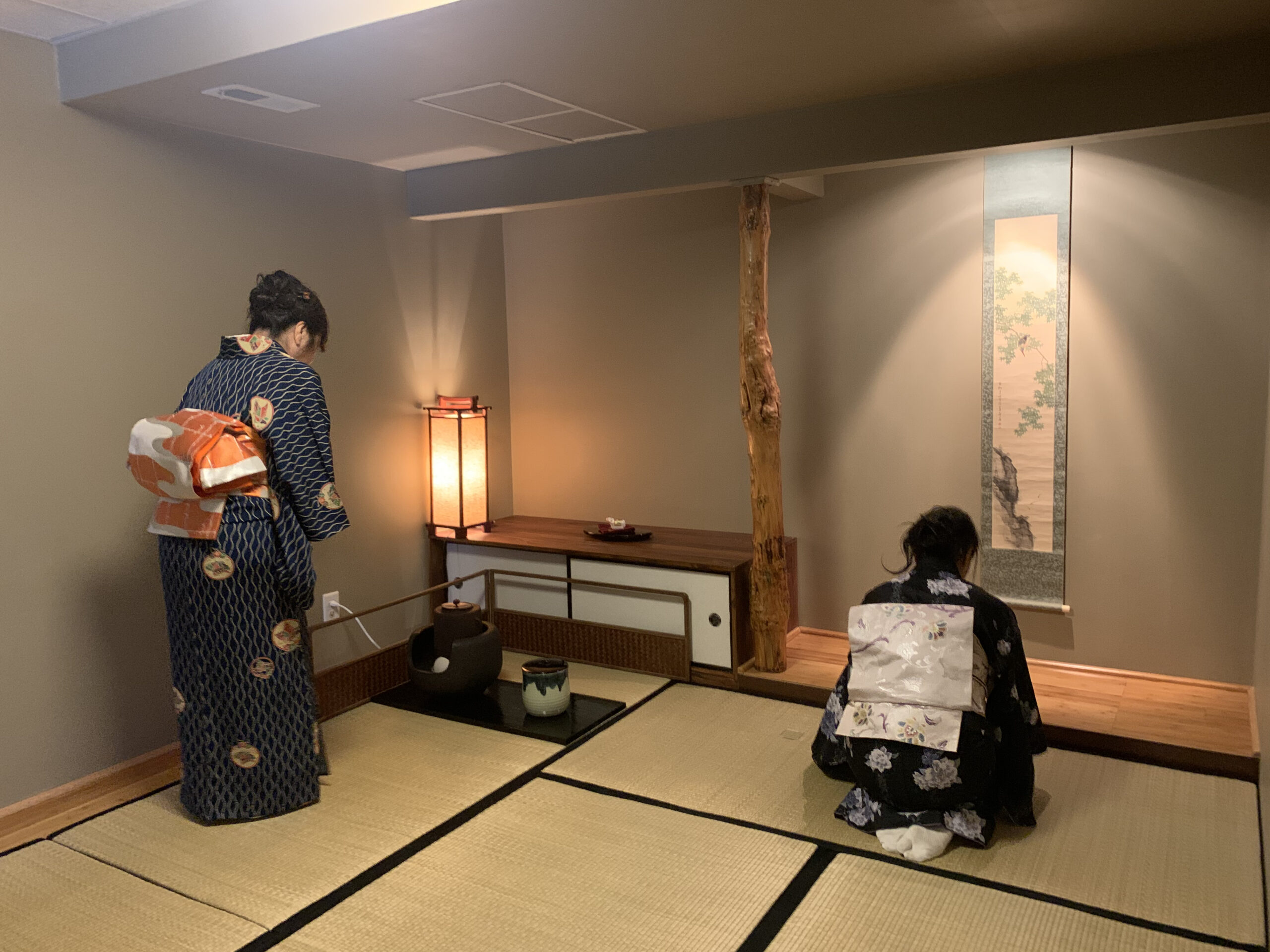
懐石の為の器など、全く持ち合わせのない中、お借りしたり、持ち合わせのものを利用しました。お料理の材料もセントルイスでは手に入りにくい中、出来る範囲でホンモノに近い形ですべて手作りをしました。お料理上手の生徒さんの協力を得て、懐石料理も美味しく、美しく出来上がり、大好評でした。
To prepare kaiseki dinner, I gathered the plates and bowls from students, and two of my students and I made every dish from scratch with the limited Japanese ingredients we can find in St. Louis. In the end, we created each course with a beautiful and delicious dish, and everybody enjoyed our homemade kaiseki dinner, our labor of love.
懐石を頂く中で、千鳥の盃も経験してもらいました。パンデミックの中ですので、実際にはそれぞれの盃で交わしましたが。
During the dinner, we did chidori no sakakzuki, the exchange of sake between the host and guests. Considering the pandemic risks, the guests used their sake cup instead of sharing one.
炭手前は省略して、お菓子を頂いた後は中立です。縁高のお菓子も練り切りが手に入らない為、開きかけの牡丹の蕾をイメージして作りました。製は『純心庵』で『百花の王』と銘々しました。
The last course was our handmade nerikiri, opening peony flower, which we named hyakka no oh meaning the “king of all flowers.” After the meal, skipping the sumidemae (charcoal procedure), the guests left the tea room for a short break.
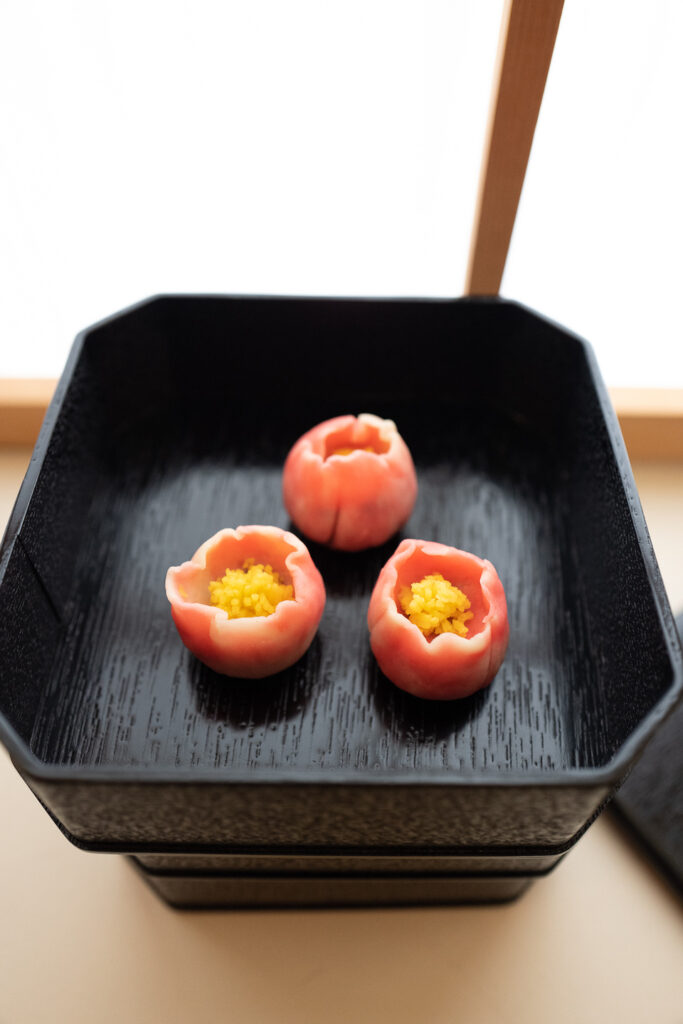
中立の後の席入りを促す銅鑼は音のいいフライパンを選び、ばちはすりこぎに布を巻き付けて作りました。太鼓グループに所属する生徒さんのアイデアです。床は青磁の花入れに朝、庭から切ってきた鉄扇を活けました。
Afterward, with the sound of dora (gong) we came back to the tearoom. The taiko drummer student in class got the idea to make a gong with a frying pan and a fabric-wrapped wooden pestle.
In the alcove I placed the clematis from my garden in the celadon vase.
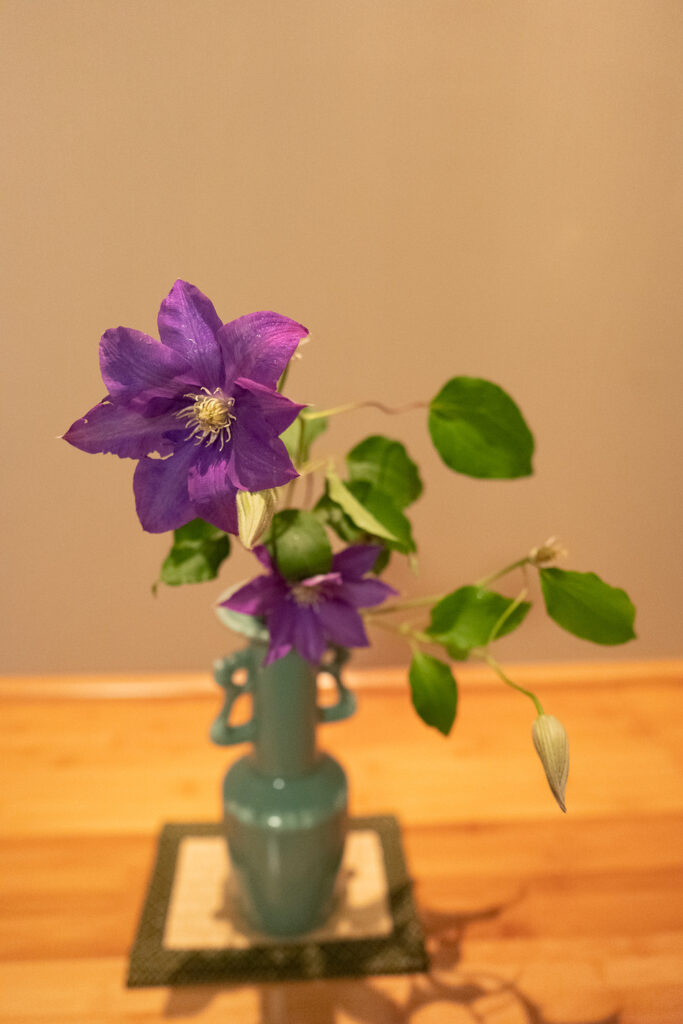
お点前は長板二つ置、続き薄茶(亭主都合)にしました。濃茶は勿論、各服点にしました。
With nagaita futatsuoki (two utensils placed on a long board), I performed tsuzuki usucha (thin tea right after thick tea). In this case, the reason for the procedure was a tight schedule of the host.
無事、すべて滞りなく終えることができ、今は充実感でいっぱいです。この茶事を通して、いたるところに見られる連客同士、亭主の思いやりと和合、尊敬、清めることの大切さ、そして臨機応変に行動できる気働きと静けさ、お茶の精神『和敬清寂』を学んで頂けたら嬉しいです。
I’m so grateful we successfully completed our first formal gathering. Through this experience, I hope we all not only learned the spirit of wakeiseijaku–harmony, respect, purity and tranquility–but also consideration among the host and the guests.
お茶事の成功の裏には、色々な什器をお貸しいただき、お料理の準備、当日の半東さん、写真班、片付けなどの裏方さん、このお茶事の為に陰で支えてくださった生徒さん達、夫の協力があります。心より感謝しています。
I appreciate all the support from the people who helped me in preparing and serving dishes, taking photographs, and cleaning up afterward. This event took a lot of preparation, and I want to express my deep gratitude to my husband and students who helped me before, during, and after the event.
